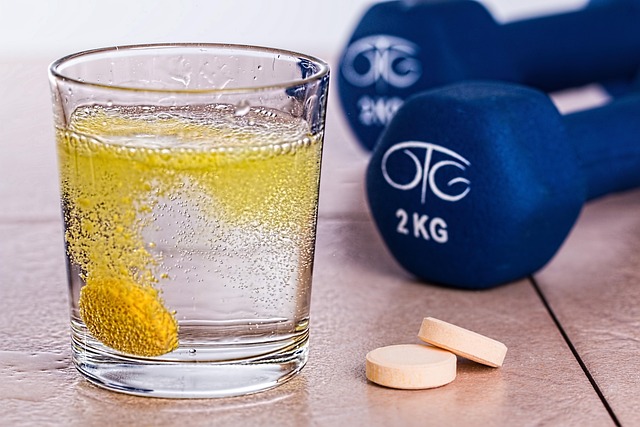Hydration timing strategies for varying climates and workloads
Timing fluid intake can influence comfort, performance, and recovery across different climates and levels of activity. This article outlines practical hydration timing strategies that integrate circadian patterns, simple biomarkers, biofeedback, and monitoring approaches to support metabolism, mobility, sleep, nutrition, and stress management while creating durable habits.

Hydration timing matters differently depending on ambient temperature, physical demand, and individual physiology. Rather than a one-size-fits-all volume rule, consider when fluids are taken relative to sleep, activity, and meals, and use basic monitoring tools and biomarkers to guide adjustments. This article presents evidence-informed timing strategies, practical monitoring tips, and habit-design ideas that can be tailored for hot, cold, or variable climates and a range of workloads.
How does circadian rhythm affect hydration timing?
Circadian patterns influence thirst perception, renal function, and fluid balance across the day. Morning hours often feature higher urine concentration due to overnight antidiuresis, so a modest morning intake can support daytime metabolism and movement. In the late afternoon and early evening, when body temperature and activity often peak, aligning fluid intake to anticipated workloads helps maintain performance. Avoid excessive evening drinking if sleep disturbance is a concern; small, timed sips before activity and after exercise can balance daytime needs without impairing nocturnal sleep.
Which biomarkers and monitoring help guide hydration?
Simple biomarkers and routine monitoring provide actionable feedback: urine color and volume, body weight pre- and post-activity, and the frequency of urination are practical starting points. More specific indicators—urine specific gravity or osmolality—are available via some point-of-care devices and give clearer signals of hydration status. Wearable sensors and biofeedback systems can track sweat rate and heart-rate variability trends, helping correlate hydration with stress and recovery. Use these data to adjust timing and amounts rather than relying solely on fixed daily targets.
How hydration interacts with metabolism, glycemic control, and nutrition?
Fluid timing affects digestion, nutrient absorption, and glycemic responses. Drinking small amounts during and after meals supports digestion and can moderate postprandial glycemic peaks by aiding gastric emptying and circulation. For longer endurance work, periodic hydration with electrolyte-containing fluids helps conserve carbohydrate stores and supports metabolism. In colder climates where thirst may be blunted, pairing fluid intake with scheduled nutrition breaks helps maintain steady glycemic and metabolic control during sustained workloads.
Hydration for mobility, movement, and recovery
Before movement or physical labor, consume fluids gradually to top off stores—about 200–400 ml (adjust by body size and workload) roughly 30–60 minutes prior helps prevent early fatigue. During prolonged activity, timed small intakes reduce gastrointestinal strain and support steady performance. Post-activity, prioritize rehydration to restore body-mass losses and electrolyte balance; using body weight changes as a guide (aim to replace ~75–100% of acute losses over several hours) supports recovery and mobility in following days.
Timing hydration around sleep and stress management
Late-evening fluid timing should balance overnight hydration with sleep continuity. Avoid large volumes within an hour of bedtime if nocturia disrupts sleep; instead, ensure adequate daytime and early-evening intake. Stress and sympathetic activation can alter fluid distribution and thirst signaling; during high-stress periods, mindful, scheduled sipping can prevent both dehydration and overdrinking. Integrating hydration into stress-management rituals—brief pauses for water after stressful tasks—can support both physiological regulation and behavioral consistency.
Building hydration habits with biofeedback and monitoring
Turn monitoring into sustainable habits: track simple biomarkers (urine color, weight trends, frequency) and set time-linked prompts tied to routine events—before commuting, at mid-morning, pre-lunch, mid-afternoon, and post-workout. Biofeedback from wearables can highlight patterns (e.g., higher heart-rate drift with dehydration) and help reinforce timed drinking when performance flags appear. Gradual habit stacking—pairing a glass of water with established activities—creates durable timing behaviors adapted to climate and workload.
This article is for informational purposes only and should not be considered medical advice. Please consult a qualified healthcare professional for personalized guidance and treatment.
In practice, start with conservative, scheduled intakes and use easy monitoring to adapt timing to your environment and workload. Hot climates and heavy labor typically require more frequent, smaller intakes and attention to electrolytes; cooler conditions may demand reminders because thirst signals can be muted. Prioritize daytime hydration aligned with circadian peaks in activity, use biomarkers and simple monitoring to guide adjustments, and build consistent habits through routine cues and biofeedback.
Conclusion Hydration timing is most effective when it reflects local climate, the intensity and duration of work, and individual physiologic signals. Combining circadian-aware schedules, basic biomarkers, and modest use of monitoring or wearables allows tailored strategies that support metabolism, mobility, recovery, sleep, and stress resilience. Practical habit design—time-linked cues and incremental adjustments—helps sustain effective hydration across varied daily demands.





